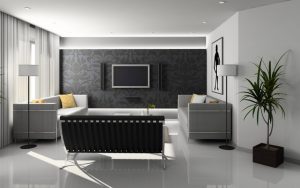There are particular features of a profession that one must grab hold of so as to operate efficiently and expand in that industry or business. I discuss my experience as an interior designer, a profession of great decorative appeal and value.
1. The Art of Listening
Interior design is all about expressing thoughts in a visual and experiential manner. In the beginning of a job, prior to any pitch or proposal, I listen attentively to ascertain what the customer’s vision is. From time to time, it’s not visibly defined but throughout conversation and getting to know a bit more about them, their lifestyle, it’s simpler to craft an outline for a story.
Listening Is also about getting all our perceptions open and being receptive to inspiration.
2. The Ability to Watch
The next step is looking, viewing beauty, identifying key components which eventually become part of the design narrative. The world around us is loaded with examples of very good design, showcases of craftsmanship and moments of inspiration that is amazing. Extracting inspiration and details from our environment, like selecting an antique piece and upgrading it for a modern use is something that I find just as gratifying as the interior design procedure.
3. The Interface with Architecture
A sense of place and respect to the architectural industry is a key pillar of interior design. Interior design embraces settings and ought to be a natural development of the location structure

is set in. The best jobs I’ve worked on are those in which interior architecture and design have overlapped effortlessly, from flooring transition into compatible substance palettes, all of the way to a fantastic outcome, where people do not speak about it as a simply a space but much more of an experience which has left a memory.
4. A Question of Scale
Researching scale and seeking the appropriate proportions is essential to interior design. Grandeur, luxury, intimacy are subjective ideas which take shape by how we employ scale with which substances we choose to use. High ceilings give a feeling of space and airiness to a room. Human scale is vital to ensure we feel comfy and cosy. Massive floorboards from older pine trees, in which you are able to ‘read’ grain is much more lavish than thin strips of timber on a floor for example. A wall of big book matched slabs of a veiny rock is more luxurious than routine tiles. The choices we make, in regard to scale, are critical for the final result and overall decoration and design.
5. Balance and Contrast
A sense of equilibrium and stability is my final pursuit when designing a room. I use layering to achieve equilibrium and stability. This can be a ‘tone on tone’ pattern with a single accented powerful colour or a substance palette which combines sleek, glossy textures using much more organic, stripped down surfaces.
Natural substances willforever be the greatest and at the top of the favourites list. Understanding the qualities of each substance is vital. Wool is naturally fire retardant, a crucial property for business spaces. Silk breathes and is cool in the summertime in addition to being warm during winter. Colour may fade if utilised in a space with direct sunshine. Ceramics are so flexible. Personally, I adore the relief ceramic tiles. I also enjoy using them in unanticipated ways, such as on table tops at a restaurant or to add ‘movement’ and attention on the very front of a cocktail bar counter top. Contrast adds play. Playing with dark and light adds interest. Occasionally it’s all about developing a transition out of a dark space into a milder one.